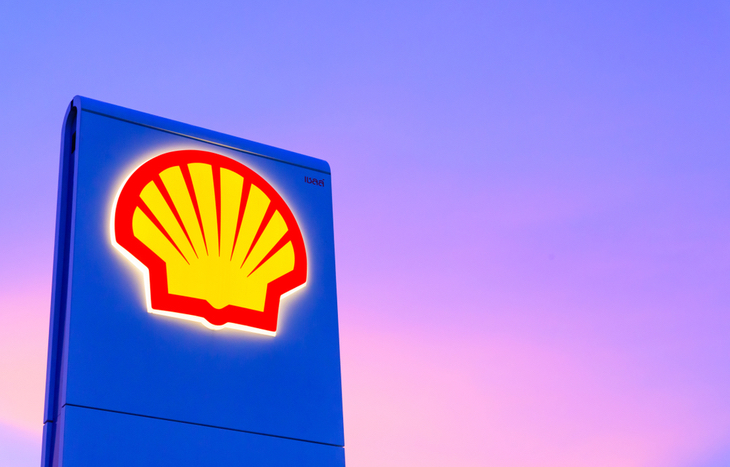Shell Oil Reports Record Profits on Booming Energy Demand
Energy stocks have outperformed in 2022 as the sector remains one of the only bright spots in a market that’s looking more bearish by the month. While Big Tech, Consumer Cyclical and Financials have fallen on worse-than-expected earnings and EPS, energy conglomerates like Shell (NYSE: SHEL) have benefitted from record-setting quarters. In fact, Shell Oil has outperformed even the flourishing energy market as of its most recent earnings report.
Let’s take a closer look at Shell’s recent performance, as well as the outlook for the energy sector as turbulence continues for most of the rest of the stock market.

Shell Reports Record-Setting Profits in Q1
Shell’s most recent earnings report (Q1) was immensely positive for investors. According to the company, adjusted earnings for the first quarter hit a whopping $9.13 billion: a record-setting figure for one of the world’s premier hydrocarbon conglomerates. It smashed the company’s expected revenue projections by an astounding 88%, and topped the company’s previous earnings high, which came in 2008.
Shell’s strong performance stretches beyond profits. The company beat its earnings per share (EPS) target by nearly 10% for the quarter. Quarterly revenue growth (year-over-year) is up more than 50%, jumping substantially from a meager 2.3% growth over the past five years.
Shell’s stock price has responded in-kind. The company trades 60% above its 52-week low and has benefitted from EPS growth of more than 190% year-to-date. Its 20-, 50- and 200-day moving averages are all positive, indicating continued investor confidence as energy surges in an otherwise down market.
Q1 Profits Follow a Positive Year-End Trend
Shell’s first quarter performance in 2022 comes on the tails of a largely positive wrap of 2021. The company posted adjusted full-year earnings of $19.29 billion, including a strong push of $6.4 billion in adjusted earnings in Q4 of 2021. The strong tailwinds propelling the energy market in 2022 have only served to lift Shell Oil into a position where it can continue to return value to shareholders.
While the company missed its fourth quarter EPS target of $1.34 by more than 38%, Shell buoyed on more than 45% outperformance of revenue expectations. The juxtaposition set up an enticing prospect for value investors headed into 2022 and created a buying opportunity that’s more than paid off as of Q2. The company further positioned itself as an attractive buying opportunity by reducing net debt at the end of 2021, shaving roughly $23 billion off its books.
In more good news, Shell Oil announced that it would parlay its strong earnings into two initiatives to return value to investors in 2022. First, the company announced that it would increase its dividend by 4%, to $0.25 per share. Second, Shell authorized a $8.5 billion share buyback program. These announcements follow the company’s pattern for creating shareholder value. In 2020, Shell Oil bolstered its dividend with a 38% increase and announced more than $2 billion in share buybacks.
All told, Shell’s performance over the past five quarters has put it in an extremely strong position. It’s one that’s only exemplified by the current state of global energy markets.
Geopolitical Turbulence Sends Energy Demand (and Prices) Skyrocketing
Shell Oil’s record-breaking profits and strong financial position are largely the result of global turbulence in the energy markets. Slapped with an embargo for its attempted invasion of Ukraine, Russia is no longer a player in the world’s oil and gas markets. With oil exports totaling more than 7.8 million barrels a day, Russia was a significant player in the sector. Now, demand has shifted to companies like Shell.
Beyond oil, Shell is distinctly positioned as one of the world’s premier traders of liquid natural gas (LNG). Europe seeks to end reliance on Russia for LNG supplies. And Shell has a competitive advantage that’s already allowing it to step in and capture market share. According to reports from Shell, LNG sales rose by 9% in the first quarter, to 18.3 million tons. The company has also begun to aggressively pursue long-term contracts as an LNG supplier.
Increased demand is only one side of the equation for Shell’s record-setting profitability in 2022. On the other side are inflationary forces driving up the cost of fuel. Shell, as an integrated company, is able to exercise control over the extraction, refinement and distribution of fuel, passing costs downstream all the while. As a result, the company is seeing opportunities to increase its margins.
Right now, Shell maintains a 24.40% gross margin, which boils down to a 7.40% net profit margin. The energy sector continues to boom. And Shell is stepping in to capture market share voided by Russia. Therefore, analysts expect the company’s sales and margins to rise in tandem. It’s a sentiment shared by the company, which plans to continue increasing its dividend through the end of 2022.
Will Shell Oil Continue to Outperform in 2022?
Major market indicators signal hard times ahead for the broader stock market. Yet, energy stocks continue to stand apart as strong outperformers in 2022, with Shell Oil among them. Investors seeking safe haven investments during a market downturn can and should take a second look at Shell Oil. The company is realizing record profits in 2022. Moreover, it’s taking steps to return tremendous value to shareholders.
Want to learn more about the energy market’s prospects in the current investment environment? Subscribe to one of the best investment newsletters and get the scoop on which energy companies are distinguishing themselves as safe, reliable investments amid market turbulence.





